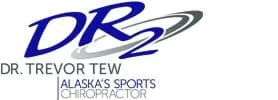Most chronic joint-related problems involving the hip, knee, and ankle1,2 can be successfully managed with conservative treatment. Surgery for such conditions is typically a last resort and frequently does not work out well. Revision (repeat) procedures are common and represent a failure of appropriate patient selection. Severe, unrelenting, intractable pain is a suitable indication for procedures such as total joint replacement. But the best solution, of course, is to never get to such a set of circumstances in the first place. Chronic joint-related pain is often the result of faulty biomechanics. Abnormal mechanical stresses cause pain. The biggest part of the solution of such problems is learning how to correctly use your personal machine, that is, your own body.
We almost never think of what it takes for our body to work properly until something goes wrong. Usually what's going on physiologically is a seamless process, hidden from our conscious mind. However if we're experiencing chronic joint pain (or, better, at the first sign of such pain), it's time to become proactive.
Mechanical problems involving joints may be conceived as "crossing energies." Mechanical loads (such as forces of gravity) are best opposed by forces arrayed in parallel to, or perpendicular to, the force being supported. Such parallel or perpendicular forces may be thought of as "straight energies." Forces that are not "straight", that is, forces deployed at an acute angle, will cause mechanical stress to a joint over time. Such ongoing stress will damage muscles, tendons, and ligaments, resulting in strains and sprains. If these injuries are not corrected and become chronic, one may begin to experience a great deal of misery.3
Employing "straight" lines of force does not involve actually doing anything physically. Rather, such "straight energies" are activated by a process of visualization. You "see" the straight lines in your mind. To do this, you visualize a straight line running from your hip socket, through the center of your knee, across the center of your ankle, and down to the space between your first and second toes. The straight-line visualization connects your hip socket, knee, ankle, and first/second toe in both standing and bent-knee positions. Your mental image of these straight lines causes specialized nerve endings (proprioceptors) in your hip, knee, ankle, and foot to align these joints and align the mechanical actions of associated muscle-tendon groups. The result is balanced mechanical forces traversing these joints and, over time, reduction in pain. Time may be required for injured soft tissues to heal, but the typical long-term result is decreased pain and improved function.
The "straight" lines of force solution is low-tech and simple. Practice and consistency will go a long way toward successful management of chronic joint-related pain.
1Fox AS, et al: What is normal? Female lower limb kinematic profiles during athletic tasks used to examine anterior cruciate ligament injury risk: a systematic review. Sports Med 44(6):815-832, 2014
2Calatayud J, et al: Exercise and ankle sprain injuries: a comprehensive review. Phys Sportsmed 42(1):88-93, 2014
3Sidorkewicz N, et al: Examining the effects of altering hip orientation on gluteus medius and tensor fascae latae interplay during common non-weight-bearing hip rehabilitation exercises. Clin Biomech 2014 Sep 15. pii: S0268-0033(14)00213-7. doi: 10.1016/j.clinbiomech.2014.09.002. [Epub ahead of print]
